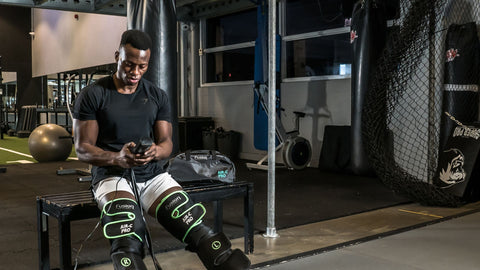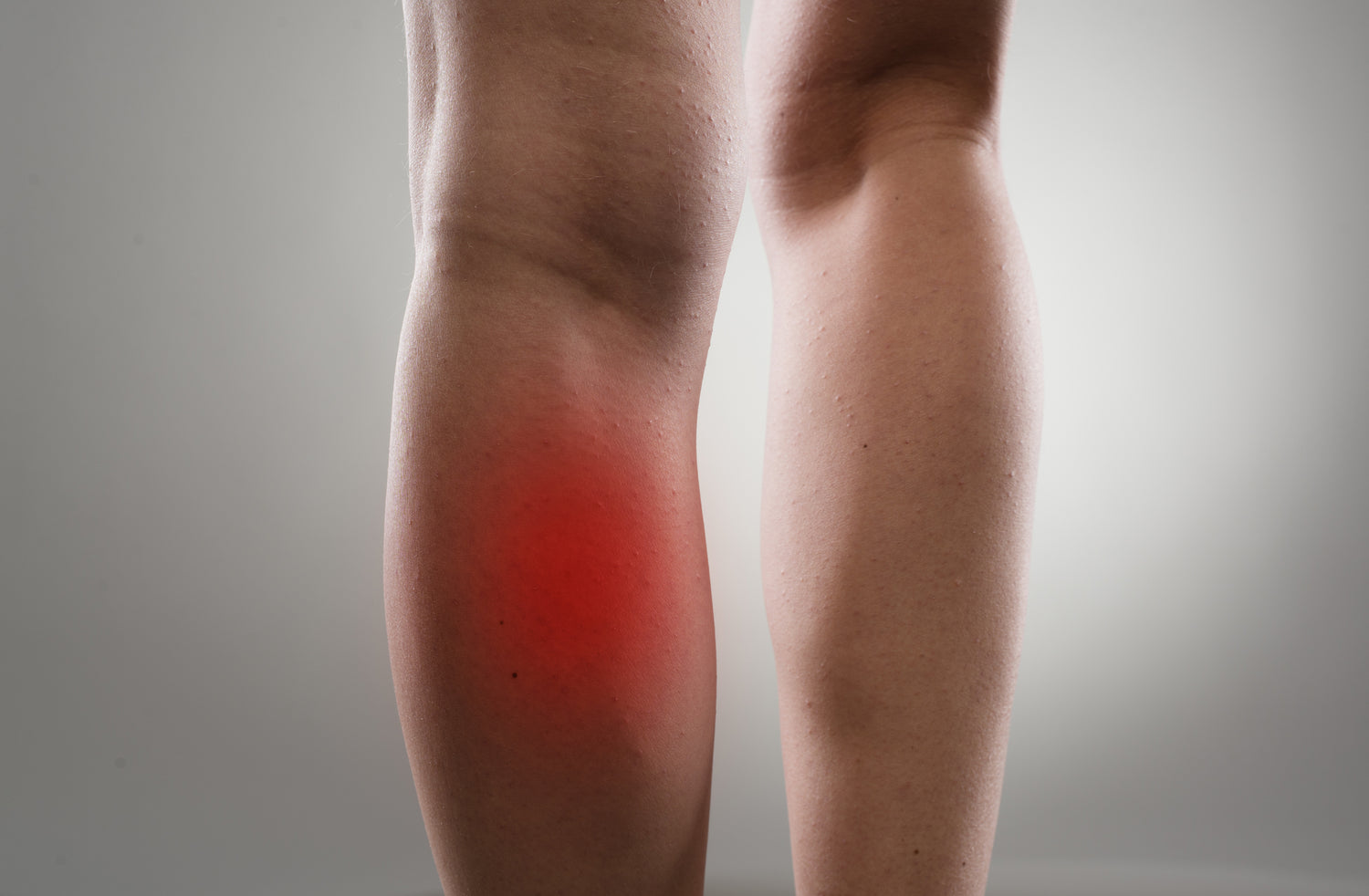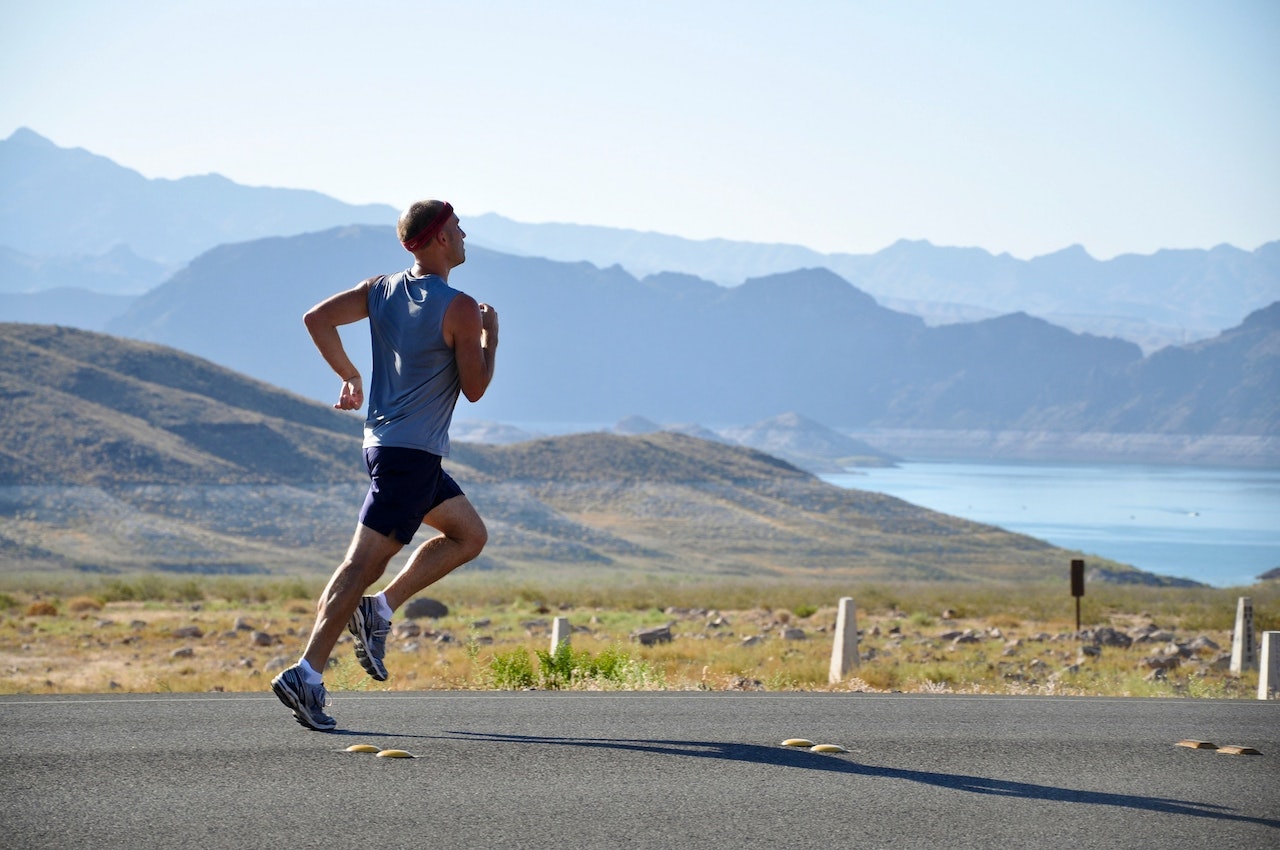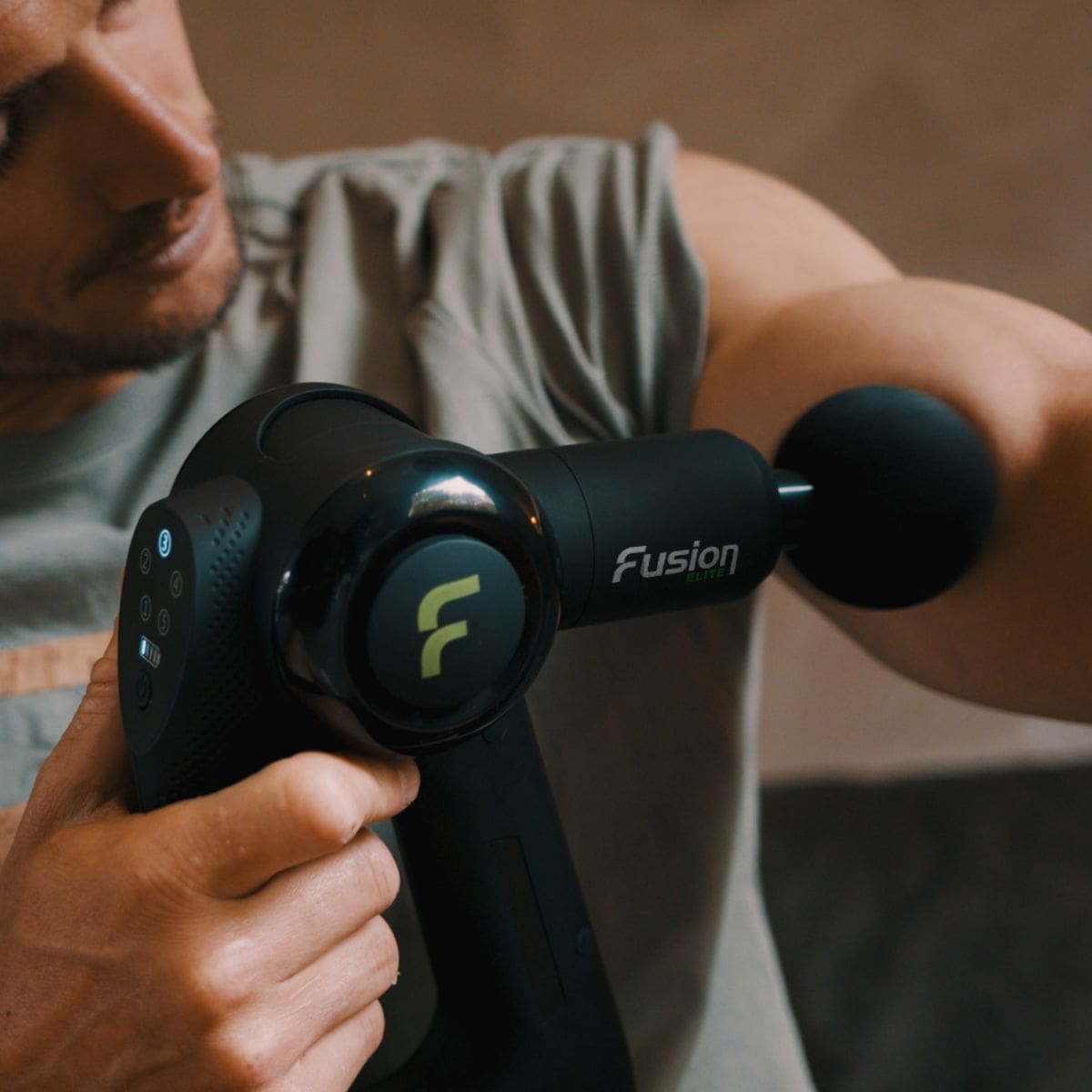Have you ever had tight or stiff calves and wondered why? Have you tried every conceivable stretch and massage technique, but the soreness persists?
If this is the case, then your calf muscles could be chronically tight.
Stiff calves are a relatively common problem experienced by many people, especially those who are physically active. The calf muscles are responsible for helping you move your feet and ankles, so when they become tight or stiff, it can be difficult to perform everyday activities.
Fortunately, a few simple solutions can help prevent and relieve stiff calves. In this article, we will go over these solutions in detail to help you get back to feeling your best.
But before we dive in, let's look at what causes stiff calves in the first place and what symptoms to look out for.
Common Causes of Stiff Calves
Stiff calves can be caused by a variety of factors that can range from lifestyle choices to medical conditions. Some of the most common causes of stiff calves include:
1. Overuse of the calf muscles
One of the most common causes of having stiff calves is overusing the calf muscles. This can happen when you're engaging in activities that require a lot of repetitive movements, such as running or playing sports.
Over time, these activities can cause your calf muscles to become tight and sore. What's more, if you don't give your calf muscles enough time to rest and recover, the soreness can become chronic.
2. Dehydration
Dehydration is another common cause of stiff calves.
When your body doesn't have enough water, it can cause your muscles to become tight and sore. This is because dehydration causes a decrease in blood flow to the muscles, which can lead to stiffness.
Also, dehydration can cause electrolyte imbalances, further contributing to muscle tightness.
3. Poor posture
Another common cause of stiff calves is poor posture.
Sitting or standing in an awkward position for long periods of time can put extra strain on your calf muscles, leading to tightness and soreness.
If you're experiencing any of the above symptoms, taking steps to prevent and relieve your stiff calves is important.
4. Muscle imbalances
Muscle imbalances are also a common cause of stiff calves.
They occur when one muscle group is stronger than the other, leading to an imbalance in strength and flexibility. For example, if your quadriceps are stronger than your hamstrings, it can lead to tightness in the calf muscles.
5. Tight shoes or socks
Wearing tight shoes or socks can also contribute to stiff calves.
They can restrict the movement of your feet and ankles, leading to tightness in the calf muscles. What's more, tight shoes or socks can also cause friction, which can further contribute to the problem.
If you have a habit of wearing tight shoes or socks, it's important to switch to more comfortable options.
6. Vitamin D deficiency
Low levels of vitamin D can also contribute to stiff calves.
Vitamin D helps to regulate calcium and phosphorus levels in the body, which are both important for muscle health. If you're not getting enough vitamin D, it can lead to muscle weakness and tightness.
7. Medical conditions like arthritis, diabetes, and thyroid disease
Medical conditions like arthritis, diabetes, and thyroid disease can also cause stiff calves.
Arthritis can lead to inflammation in the joints, which can cause stiffness in the muscles surrounding them. Diabetes can cause nerve damage, leading to muscle weakness and tightness. And thyroid disease can affect the body's metabolism, leading to muscle fatigue and soreness.
If you have any of these medical conditions, it's important to talk to your doctor about how to manage them. Now that we've gone over factors that can cause stiff calves let's look at what signs and symptoms to look out for.
Common Signs and Symptoms of Stiff Calves
Having stiff calves can be uncomfortable and can make it difficult to perform everyday activities. Common signs and symptoms of this health condition include:
1. Muscle pain or soreness
Pain or soreness in the calf muscles is one of the most common signs and symptoms of stiff calves.
This can range from a dull ache to a sharp, stabbing sensation. It may also be accompanied by swelling and tenderness in the area. The pain may worsen with activity or when pressure is applied to the muscle.
In some cases, it may even be difficult to walk or move the affected area.
2. Swelling in the calf area
Another symptom people with stiff calves may experience swelling.
This health condition can be caused by inflammation in the muscle or a buildup of fluid in the area.
It may also be accompanied by redness and warmth to the touch. When swelling is present, it's important to seek medical attention as soon as possible.
3. Difficulty walking or running
Difficulty walking or running is another common symptom of stiff calves.
When the calf muscles become tight and sore, it can make it difficult to move your feet and ankles in a normal range of motion.
This can lead to an inability to walk or run properly and a decrease in overall mobility. What's more, leg pain associated with stiff calves may worsen when you attempt to walk or run, making it even more difficult to move.
4. Limited range of motion in the ankles or feet
Stiff calves can also make it difficult to move your ankles or feet in a normal range of motion.
When the calf muscles become tight and sore, it can limit your ability to move your feet and ankles in a normal range of motion. This can lead to an inability to flex or extend the ankles and feet and difficulty with activities such as running or jumping.
The pain may sometimes worsen when you attempt to move your feet or ankles.
If you're experiencing any of the above symptoms, taking steps to prevent and relieve your stiff calves is important. Let's look at some ways you can do that.
Treatment Solutions to Relieve Stiff Calves
Treatment solutions for stiff calves can vary depending on the underlying cause. However, certain treatments may help to reduce pain and improve mobility. Some of them include the following:
1. Use a massage gun to massage your calf muscles
Massage guns are a great way to target the tight calf muscles and reduce stiffness. They help to increase blood flow to the area, which can help reduce soreness and stiffness.
To use a massage gun, place it on the affected area and move it in circular motions for 30 seconds before switching legs. Make sure the pressure isn't too strong, or it could cause further irritation.
Also ensure that you don't use the massage gun for more than 10 minutes at a time, as this could cause more harm than good.
2. Take a warm bath or shower
Taking a warm bath or shower can be an effective way to reduce stiffness in your calves. The warm water helps to relax tight muscles and increase blood flow, which can help reduce soreness and stiffness.
To take a warm bath or shower, fill your tub with warm water and add Epsom salt or essential oils for extra relaxation. Soak in the tub for 15-20 minutes and then wash off with warm water.
3. Use a heating pad
Using a heating pad is another effective way to reduce stiffness in your calves.
Heat emitted helps to relax the muscles and increase blood flow, which can help reduce soreness and stiffness. Place a heating pad on the affected area for 15-20 minutes at a time.
Ensure that the heat isn't too hot, or it could cause further irritation. You can also use a hot water bottle or warm compress for the same effect.
4. Apply ice packs or a cold compress
Applying ice or a cold compress is an effective way to reduce calf muscle strains.
Ice helps to reduce inflammation and sudden pain, while a cold compress can help to reduce swelling and soreness.
To apply ice or a cold compress, wrap the ice or cold compress in a towel and place it directly on the affected area for 15-20 minutes at a time. Ensure the temperature isn't too cold, or it could cause further irritation.
5. Take pain relievers
Taking pain relievers can be an effective way to relieve sore calves.
Pain relievers such as ibuprofen and acetaminophen can help to reduce inflammation and severe pain, which can help to reduce stiffness.
Ibuprofen works best when taken at the first sign of pain, while acetaminophen is best taken after the pain has already started. Always follow the instructions on the label and speak to your doctor before taking any medication.
You can also try using topical pain relievers such as creams and gels. These can be applied directly to the affected area to help reduce soreness and stiffness.
6. Use a foam roller to massage your calf muscles
Foam rolling is an effective way to massage your tight calf muscles and reduce stiffness. Foam rolling helps to increase blood flow to the area, which can help reduce soreness and stiffness.
To foam roll your calf muscles, place a foam roller on the floor and sit on it with your legs extended in front of you. Place one foot slightly behind the other and press your hands against the floor for balance.
Roll your calf muscles up and down the foam roller for 30 seconds before switching legs.
7. Use air compression devices to improve blood circulation
Another way to relieve stiff calves is to use an air compression device. Air compression devices help to increase blood flow to the area, which can help reduce soreness and stiffness.
Place an air compression device on the affected area and turn it on for 15-20 minutes. It is important to follow the instructions on the device to ensure that you are using it correctly.
So easy to use. Just sit back, relax and recover you legs.

The road to recovery from stiff calves can be long, but with the right treatment and care, you can reduce your stiffness and get back to feeling your best.
On the flip side, if you want to perform an intense workout or activity and want to avoid calf stiffness, there are a few things you can do to prevent it. Let's find out!
Tips to Prevent Stiff Calves in the Future
Preventing stiff calves in the future is key to avoiding injury and discomfort. Here are some tips to help you out:
1. Stretch regularly to ease pain
Stretching your calf muscles is one of the best ways to loosen up your calf and reduce muscle cramps.
Popular calf stretches that can help relieve stiffness include the standing calf stretch, seated calf stretch, and wall calf stretch. Here's how to do each:
Standing calf stretch
Standing calf stretch is a great way to stretch your calf muscles and reduce stiffness.
To do this stretch, stand facing a wall with your feet shoulder-width apart. Place one foot slightly behind the other and press your hands against the wall for balance. Bend your front knee and lean forward until you feel a gentle stretch in the back of your calf. Hold this position for 30 seconds before switching legs.
Seated calf stretch
Seated calf stretch is a great way to loosen up your tight calves and reduce stiffness.
To perform this exercise, sit on the floor with your legs extended in front of you. Place one foot slightly behind the other and press your hands against the floor for balance.
Bend your front knee and lean forward until you feel a gentle stretch in the back of your calf. Hold this position for 30 seconds before switching legs.

Wall calf stretch
Another regular stretching exercise to loosen up your tight calves is wall calf stretch.
To perform this simple stretch, stand facing a wall with your feet shoulder-width apart. Place one foot slightly behind the other and press your hands against the wall for balance.
Bend your front knee and lean forward until you feel a gentle stretch in the back of your calf. Hold this position for 30 seconds before switching legs.
2. Wear the right shoes for your feet
Wearing the right shoes for your feet is essential to preventing stiff calves.
Shoes that are too tight or too loose can cause strain on your calf muscles, leading to stiffness and soreness. It is important to choose shoes that fit properly and provide adequate support for your feet.
Look for shoes with cushioning in the midsole and arch support to help reduce stress on your calves. Additionally, replace your shoes regularly, as they can wear down over time.
3. Stay hydrated
Staying hydrated is an important part of preventing stiff calves.
When you are dehydrated, your muscles can become tight and sore, leading to stiffness in the calves. Make sure to drink plenty of water before, during, and after any activity to keep your body hydrated.
Additionally, electrolyte drinks can help replenish lost minerals and provide extra muscle hydration. Common electrolyte drinks include Gatorade and Powerade.
4. Eat foods with lots of protein and healthy fats
Eating a balanced diet is essential for preventing stiff calves.
Protein and healthy fats are especially important for muscle health, as they provide the building blocks to repair and strengthen muscles. Make sure to include lean proteins such as chicken, fish, eggs, and legumes in your diet.
Healthy fats like avocados, nuts, seeds, and olive oil can also help reduce inflammation and improve muscle recovery. You can also take a fish oil supplement to get an extra boost of omega-3 fatty acids.
5. Wear supportive shoes
Another prevention tip for stiff calves is to wear supportive shoes.
Shoes that are too tight or too loose can cause strain on your calf muscles, leading to stiffness and soreness. Instead look for shoes with cushioning in the midsole and arch support to help reduce stress on your calves.
Additionally, make sure to replace your shoes regularly, as they can wear down over a period of time.
6. Avoid sitting for long periods of time
Sitting for long periods of time can cause your calf muscles to become stiff and sore.
To prevent this, make sure to take regular breaks throughout the day and move around as much as possible.
Additionally, try to stretch your calves every hour or so to keep them loose and flexible. If you have a desk job, consider investing in a standing desk to help reduce the amount of time you spend sitting.
Frequently Asked Questions
In this section, we will answer some of the most common questions about stiff calves. Let us know in the comments section below if you have any other questions.
Should I run with stiff calves?
Running with stiff calves can be dangerous and should be avoided. If you have stiff calves, it is important to rest and recover before running again. Additionally, stretch your calves regularly and wear supportive shoes to help reduce the risk of injury.
Ensure that you take the necessary precautions before running with stiff calves.
Will calf pain go away on its own?
Calf pain can go away on its own, depending on the cause.
If the pain is due to overuse or dehydration, it should subside with rest and proper hydration. However, if the pain is due to an underlying injury or condition, it may require medical attention to heal properly.
If you are experiencing calf pain that does not improve after a few days of rest, it is best to go for physical therapy or seek medical advice from a doctor.
When should I see a medical professional about my stiff calves?
If your calf stiffness persists despite trying the remedies mentioned above, it is important to seek medical advice from a medical professional or physical therapist.
They can help diagnose the problem and provide accurate treatment plans to help reduce stiffness and improve mobility. Additionally, if you experience any pain or swelling in your calves, it is important to seek medical attention as this could be a sign of an underlying injury or condition.
Will I need surgery to relieve stiff calves for the long term?
No, surgery is usually unnecessary to relieve stiff calves in the long term. In most cases, stiffness can be relieved with rest, stretching, and other non-invasive treatments. However, if your calf stiffness is due to an underlying injury or condition, such as a tear in the muscle or tendon, then surgery may be necessary to repair the damage. Additionally, if you experience any pain or swelling in your calves, it is important to seek medical attention as this could be a sign of an underlying injury or condition.
Can stiff calves cause problems elsewhere?
Yes, calf pain can cause problems in other areas of the body.
Calf pain can lead to tightness in the hamstrings and lower back and decreased range of motion in the ankle joint. Additionally, calf pain can cause knee and hip pain due to compensation from other achy muscles.
Conclusion
Stiff calves can be very uncomfortable and can lead to further problems if left untreated. It is important to identify the cause of your stiffness in order to properly treat it.
Wearing supportive shoes, stretching regularly, and taking time to rest and recover can help reduce calf stiffness. If your calf pain persists despite trying these remedies, it is best to seek medical advice from a doctor or physical therapist.
We hope this article has been helpful in answering your questions about stiff calves.
Let us know if you have any other questions about stiff calves!





